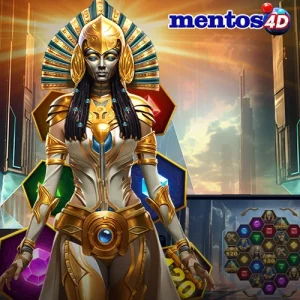The Evolution of Gaming: From Pong to Virtual Reality
Introduction: In the ever-evolving landscape of entertainment, few mediums have seen as rapid and transformative a journey as video games. What began as simple pixelated forms bouncing across a screen has blossomed into immersive experiences that transport players to fantastical worlds, challenge their skills, and spark their imaginations. This article explores the rich history, technological advancements, and cultural impact of gaming, tracing its evolution from humble beginnings to the cutting-edge realms of virtual reality.
The Dawn of Gaming: The origins of gaming can be traced back to mentos4d slot the early days of computer science and technology. In the 1950s and 1960s, scientists and engineers experimented with primitive electronic games, laying the groundwork for what was to come. However, it was not until the 1970s that gaming truly burst into the mainstream with the introduction of arcade classics like “Pong” and “Space Invaders.” These simple yet addictive games captured the public’s imagination and set the stage for the burgeoning industry.
The Rise of Home Consoles: The 1980s saw the rise of home gaming consoles, such as the Atari 2600 and the Nintendo Entertainment System (NES). These platforms brought gaming into the living rooms of millions, allowing players to experience a wide array of titles from the comfort of their own homes. From iconic franchises like “Super Mario Bros.” to groundbreaking adventures like “The Legend of Zelda,” the 8-bit and 16-bit eras laid the foundation for modern gaming culture.
The Technological Revolution: As technology advanced, so too did the capabilities of gaming hardware. The introduction of 3D graphics, CD-ROMs, and online multiplayer capabilities in the 1990s opened up new possibilities for game developers. Titles like “Doom,” “Final Fantasy VII,” and “Quake” pushed the boundaries of what was possible in terms of storytelling, immersion, and gameplay mechanics, cementing gaming as a legitimate form of artistic expression.
The Digital Age: The turn of the millennium brought about the rise of digital distribution platforms and mobile gaming. Services like Steam and the App Store revolutionized how games were bought, sold, and played, democratizing access to gaming content and fostering a vibrant indie game development scene. From casual puzzles to complex strategy games, the digital age has brought gaming to audiences of all ages and backgrounds, further solidifying its status as a global cultural phenomenon.
The Emergence of Virtual Reality: In recent years, perhaps the most significant development in gaming has been the rise of virtual reality (VR) technology. With devices like the Oculus Rift, HTC Vive, and PlayStation VR, players can now step inside their favorite games and interact with virtual worlds in ways never before possible. From heart-pounding adventures to serene landscapes, VR has opened up new frontiers for immersion and exploration, heralding a new era in gaming.
Conclusion: From its humble beginnings in the arcades of the 1970s to the immersive virtual worlds of today, gaming has undergone a remarkable transformation over the past few decades. What was once considered a niche hobby has grown into a multi-billion-dollar industry that spans continents and cultures. As technology continues to evolve and new innovations emerge, one thing is certain: the future of gaming is boundless, limited only by the imagination of those who dare to dream.